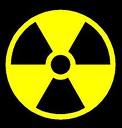Japanese Debris to Start Hitting Western U.S. and Canada

Global research Editor’s note
What the NP report does not say is that part of this debris is radioactive
It turns out that scientists underestimated the speed with which the debris would reach the Western coast of North America.
As Canada’s National Post reports today:
The largest items swept out to sea following the Japanese tsunami in March could arrive on the B.C. coastline within days, oceanographer Curt Ebbesmeyer predicted on Wednesday.
The main part of the 20-million-tonne debris field, equivalent in size to the state of California, isn’t expected until about 2014, but houses, fishboats and even small freighters could already be close to Canadian shores, Mr. Ebbesmeyer said.
***
“We just finished running a simulation with a drifter, a buoy that got lost in the area of the tsunami, and we find that the first of the debris would be here now,” Mr. Ebbesmeyer said.
Beachcombers along the west coast of B.C. should be on the lookout and report any unusual finds, he said.
Mr. Ebbesmeyer is a Seattle-based oceanographer, educated at the University of Washington, who tracks flotsam using computer models. He has consulted for multinational firms, working on projects such as the BP oil spill in the Gulf of Mexico.
***
The Japanese have immense respect for belongings such as fishing boats, said Mr. Ebbesmeyer, predicting an influx of Japanese tourists coming to B.C. to see the washed-up debris.
“When people find something on the beach, they are literally putting their hands on something that a family wants to know about,” he said.
And Senator Maria Cantwell has urged lawmakers to develop plans to prevent damage from the debris. As the Olympian writes in an op-ed today:
U.S. Sen. Maria Cantwell is absolutely right when she says the federal government must not wait until an estimated 20 million tons of floating tsunami debris from Japan begins arriving on U.S. shorelines.
Officials say the 2,000-mile-long, 1,000-mile-wide debris field from the March 11 tsunami in Japan is expected to reach beaches in Hawaii next winter and hit the Washington coast starting in late 2013.
While there is little threat that the debris – which includes everything from televisions and refrigerators to boats and tons of wood and plastic – will be radioactive, the garbage poses a huge environmental threat.
***
Putting a plan in place to minimize the environmental damage makes good sense.
Cantwell is correct when she says the United States must prepare for whatever crosses the vast Pacific Ocean. She recently inserted an amendment into a Senate bill that instructs the National Oceanic and Atmospheric Administration to come up with a contingency plan for what could be the biggest onslaught of marine garbage ever to hit North America.
***
As Cantwell noted in her speech before the Commerce Committee, “After the tragic tsunami that struck Japan, whole communities were swept out to sea in an unwieldy mass of toxic debris. This field is about five times the state of Washington. We in the Washington economy depend on our waterways for a great deal of our commerce. We have everybody from workers at restaurants to tourist visitors that are all going to be impacted by this. We can’t wait until all of this tsunami trash washes ashore. We need to have an aggressive plan on how we’re going to deal with it.”
***
“We are trying to get across our message that it is coming and it’s about time to start planning some action,” [Jan Hafner, a scientific computer programmer and the principal researcher on the tsunami debris project] said.
Washington’s Sen. Cantwell took up the cause and is right in her attempt to force the federal government to begin collecting data in order to put a plan in place to handle the trash when it begins hitting U.S. shorelines. Left unchecked, the debris could threaten multimillion-dollar fishing, shipping and recreational industries 5,000 miles from Japan.
There’s too much at stake to ignore the threats of the Japan tsunami debris. The feds must adopt a plan then devote the necessary resources to ease the economic and environmental impacts of the 20 million tons of trash headed our way.
Note: While I agree with U.S. and Canadian officials who say that most the debris will not be radioactive. However, some will be … and so both governments should do thorough ongoing testing.
As the Olympian notes, this is not a solid debris mat. Rather, the debris will be spread out over a huge area.

